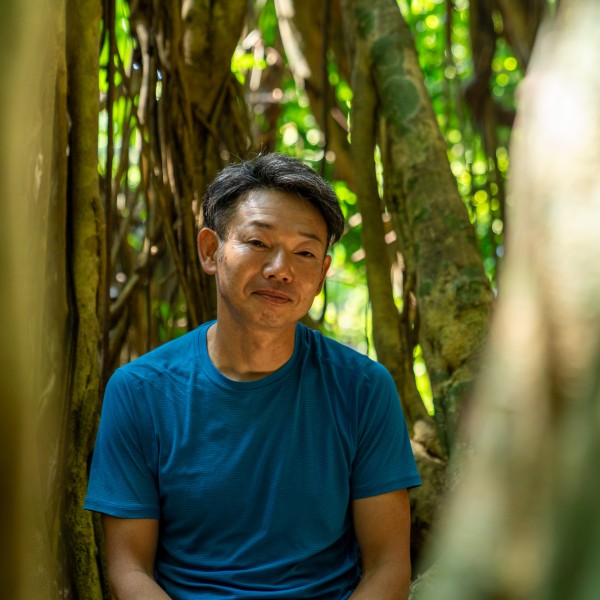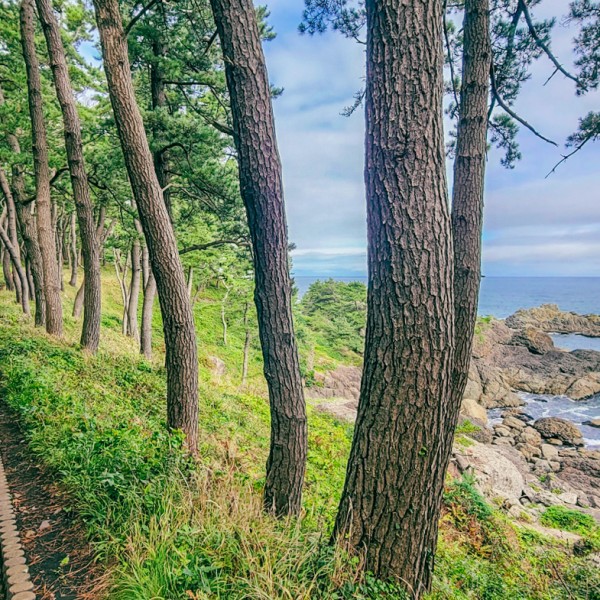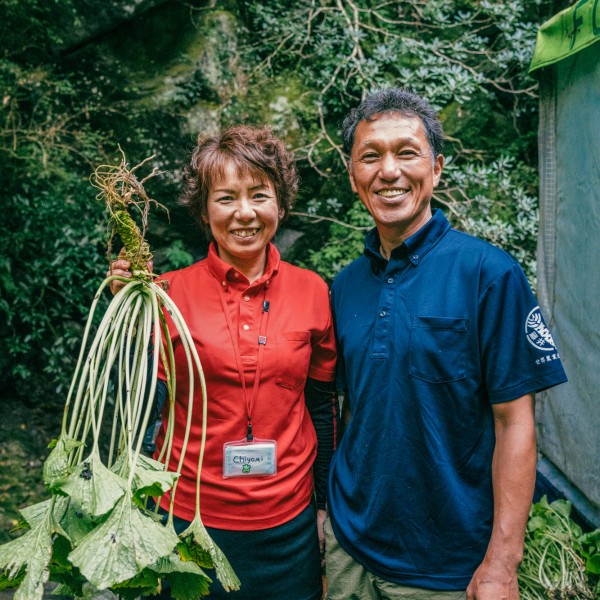By Norie Quintos
On the island of Kyushu, life buzzes and sprouts within an ancient caldera
Green hills give way to gray and the faint scent of sulphur taints the air. We know we are close. Even so, meeting an active volcano—let alone among the world’s largest and one that has mini eruptions on the regular—is a shock. I can’t decide if the dome-like bunkers and loudspeakers and the 24/7 monitoring and strictly controlled access are putting me at ease or in a panic. Both. Peering into the maw over the fenced-off edge, there’s no red bubbling cauldron like in the movies, but steam sputters menacingly. For once, our gabby group is silent, and no one protests when it’s time to leave. No one wants to tempt the gods any longer. I’m retroactively glad our guide thought to start our bike ride at the Shinto shrine at the foot of the volcano asking for permission and blessing. We jump back on our e-bikes for the descent. 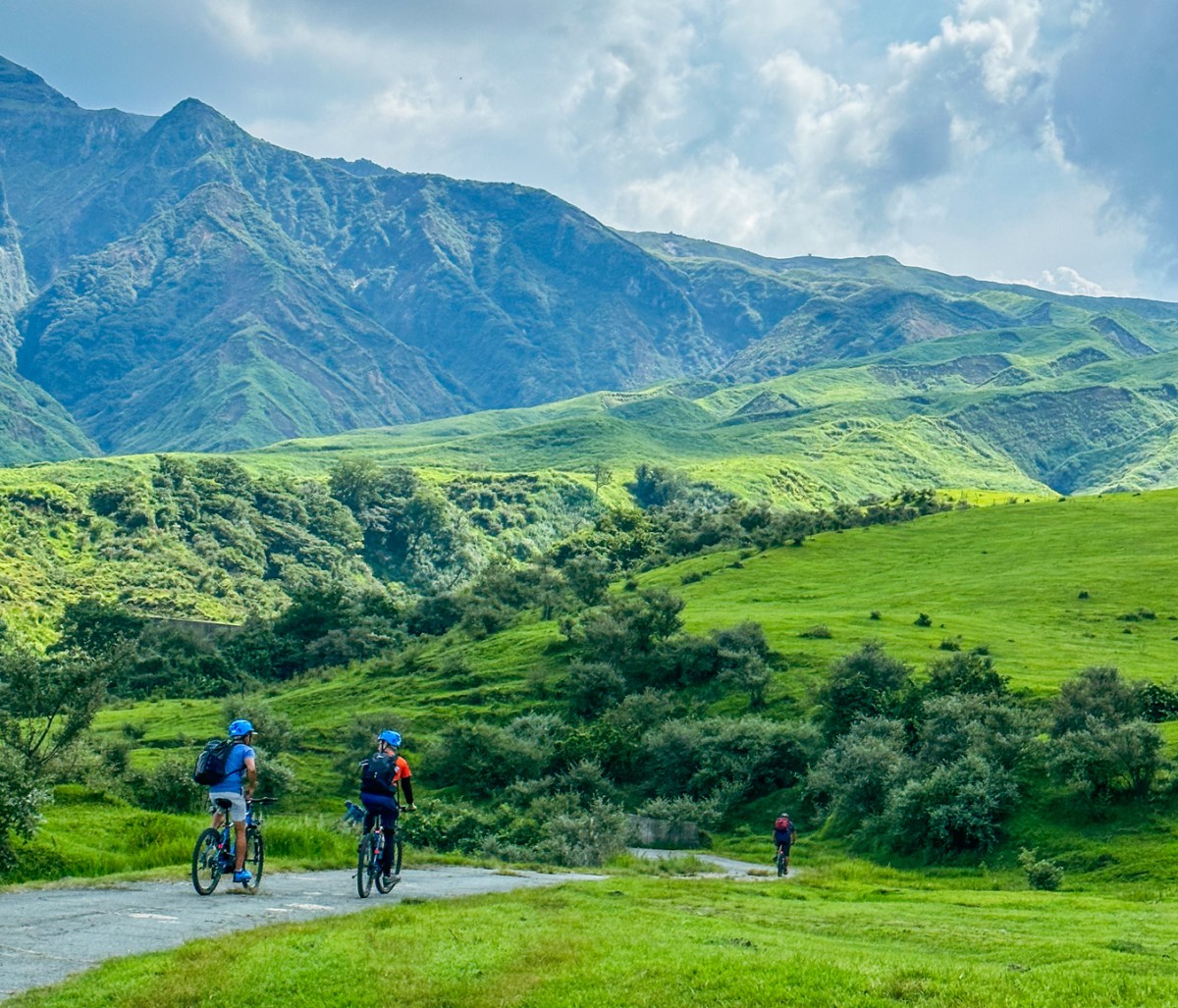
Cyclists cruise through cow pastures, rice paddies, and farmland within the Aso caldera. (Photo by Norie Quintos)
But here, on Kyushu, the southernmost of Japan’s four main islands, there’s no real escape. The island has nine active volcano systems, two of which are regarded as among the most active in the world. At the center of the island is Mount Aso, Japan’s largest. Its crater measures 11 by 16 miles, formed by a super eruption 90,000 years ago. What’s fascinating is that about 50,000 people live in its long-established towns, villages, and farms. Within the rim lies the city of Aso as well as the town and village of Takamori and Minamiaso. No other caldera in the world has such a large community. The Aso volcano has shaped topography and life in this region, both in and outside the caldera. I’m here in Miyazaki and Kumamoto prefectures to explore, mostly on foot and by bike, how life is lived so close to one of the most powerful natural forces on Earth.
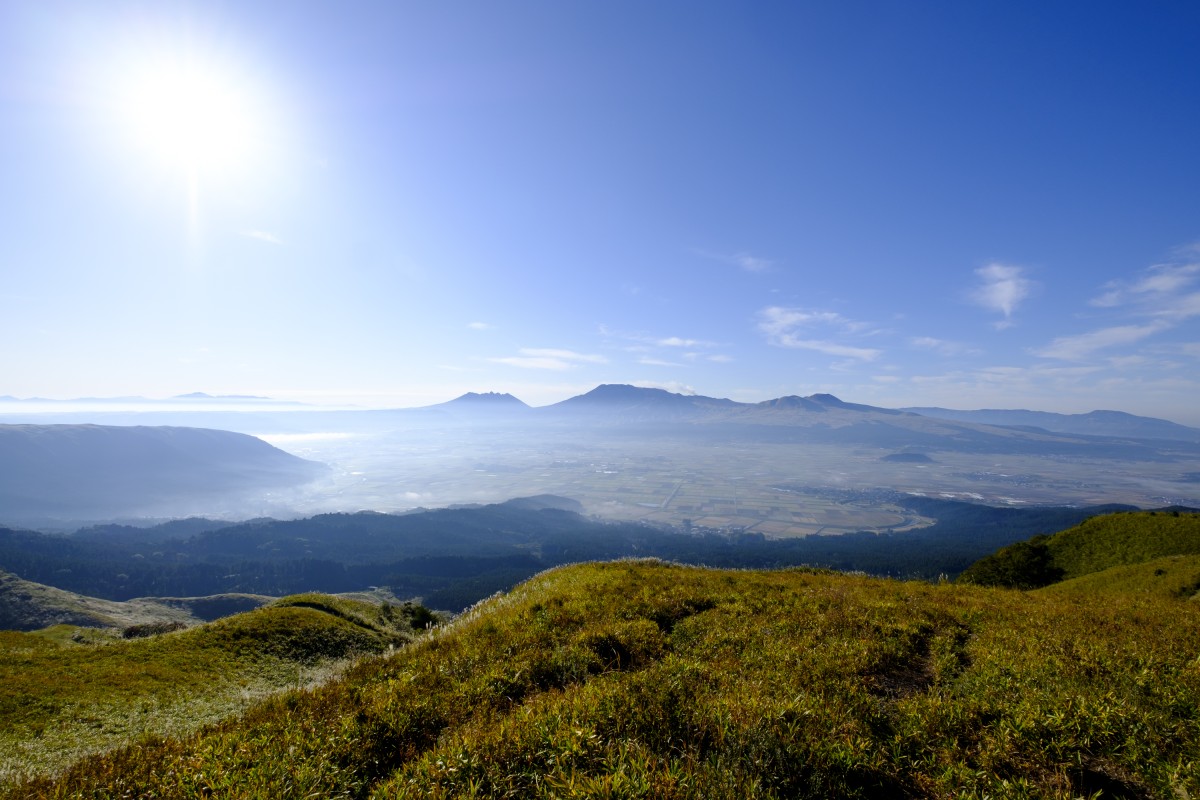 Some 50,000 people live in long-established towns, villages, and farms within the ancient caldera, formed by a super eruption 90,000 years ago.
Some 50,000 people live in long-established towns, villages, and farms within the ancient caldera, formed by a super eruption 90,000 years ago.
On the fragrant mountain ridges of Miyazaki, we are hiking on ancient foot and horse paths, led by 80-year-old Hajime Akimoto, whose hotel (Forestopia) we are staying in and whose depth of knowledge about these parts is astounding. He eyes the twigs and tracks and shadows and spores and reads them like a status update. He explains how the forest has always given people what they need. The pine tree: its sap used for torches that stay lit, even in the rain. The wild magnolia leaf: used to wrap miso paste and deer meat and then grilled. He points out a mushroom that will first make you giggle, then cause you to run for the nearest bathroom. He describes in detail what happens when the balance is upset, by climate change or other human actions. On this island that birthed Japanese civilization and guards its mythology and traditions, nature and humanity are cleaved, or ought rightly to be. Over millennia, the two have evolved in intricate harmony, not unlike the Kagura, an ancient Shinto ritual dance in 33 acts which has its roots in this region. It’s no wonder that this area contains six UNESCO World Heritage Sites, including two Global Geoparks.
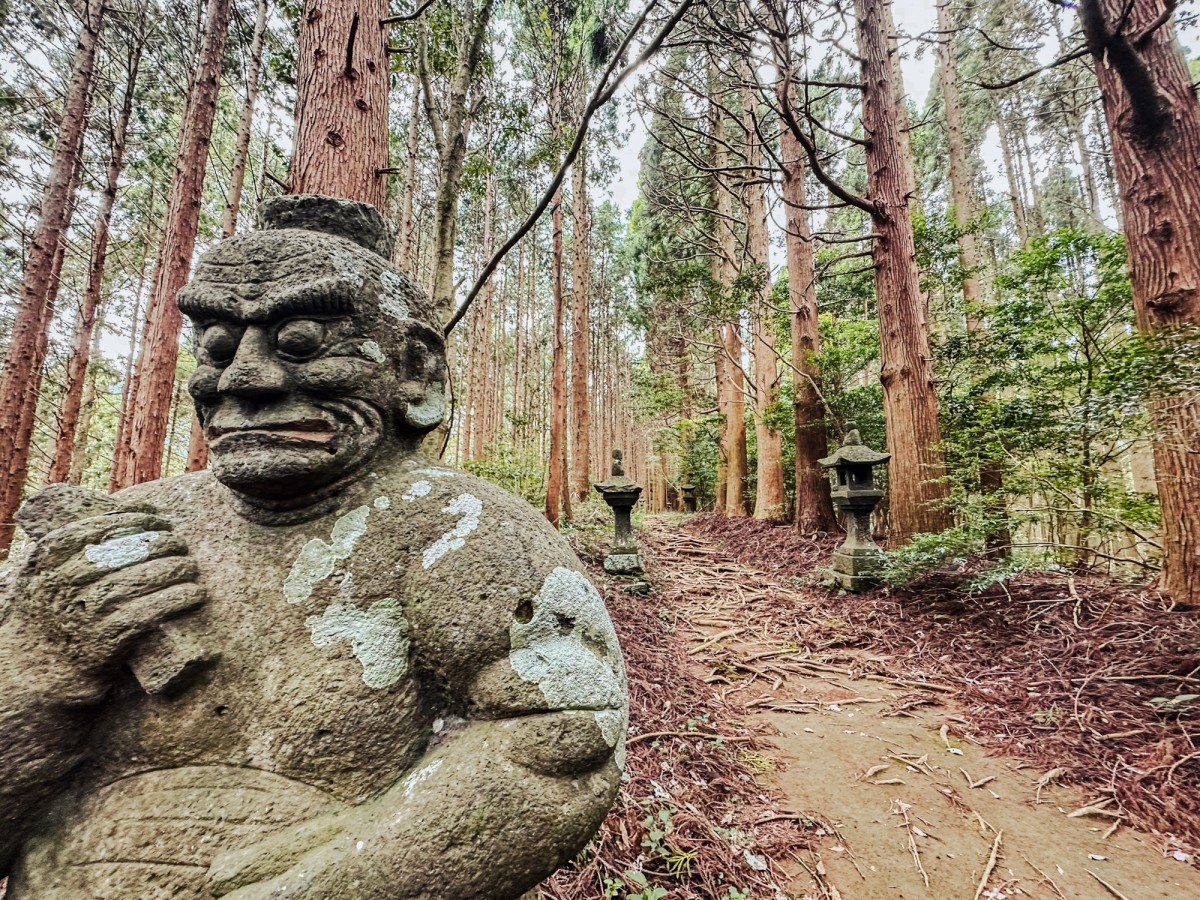 A local Shinto shrine, lined with cedar trees and statues of deities, in Takachiho, on the island of Kyushu. (Photo by Norie Quintos)
A local Shinto shrine, lined with cedar trees and statues of deities, in Takachiho, on the island of Kyushu. (Photo by Norie Quintos)
At the steepest part of the trail, the spry old man turns back at the flagging rest of us. He sings a song that has been sung for hundreds of years to motivate travelers along these paths. It’s about a man telling his grandchild to listen to the birds, look after his horse, and continue following the ridge. And so we trudge on, later to be rewarded by a vista straight out of a Sesshu Toyo ink-and-wash landscape painting: a dappled valley, the five peaks of Mount Aso glimmering in the distance.
Along with episodes of destruction, the volcano has gifted the area with dark, rich soils. From Aso City, the largest town within the caldera, we cycle through farmlands and golden thousand-year grasslands, so called because they are mentioned in 10th-century texts. People have interacted with and shaped the land here continuously for some 30,000 years. We stop at Gonbe Mura, a family farm in the village of Minamioguni, in Kumamoto prefecture, famed for its spinach. Over a made-from-scratch lunch, we get to know the Sato family, our hosts, as well as Yoshimi and Kota Hashimoto, the effervescent owners of Aso Kuju Cycle. Then, it’s back on the bikes to visit with a third-generation shiitake mushroom farmer, who insists on growing mushrooms the traditional way, on sawtooth oak logs. The process is laborious and today most shiitake mushrooms are made on artificial blocks—efficiently, quickly, anonymously—but one bite of these artisanal ‘shrooms will make you happy there are still people like 30-year-old Ryosuke Shimojo, who inject new life into old traditions.
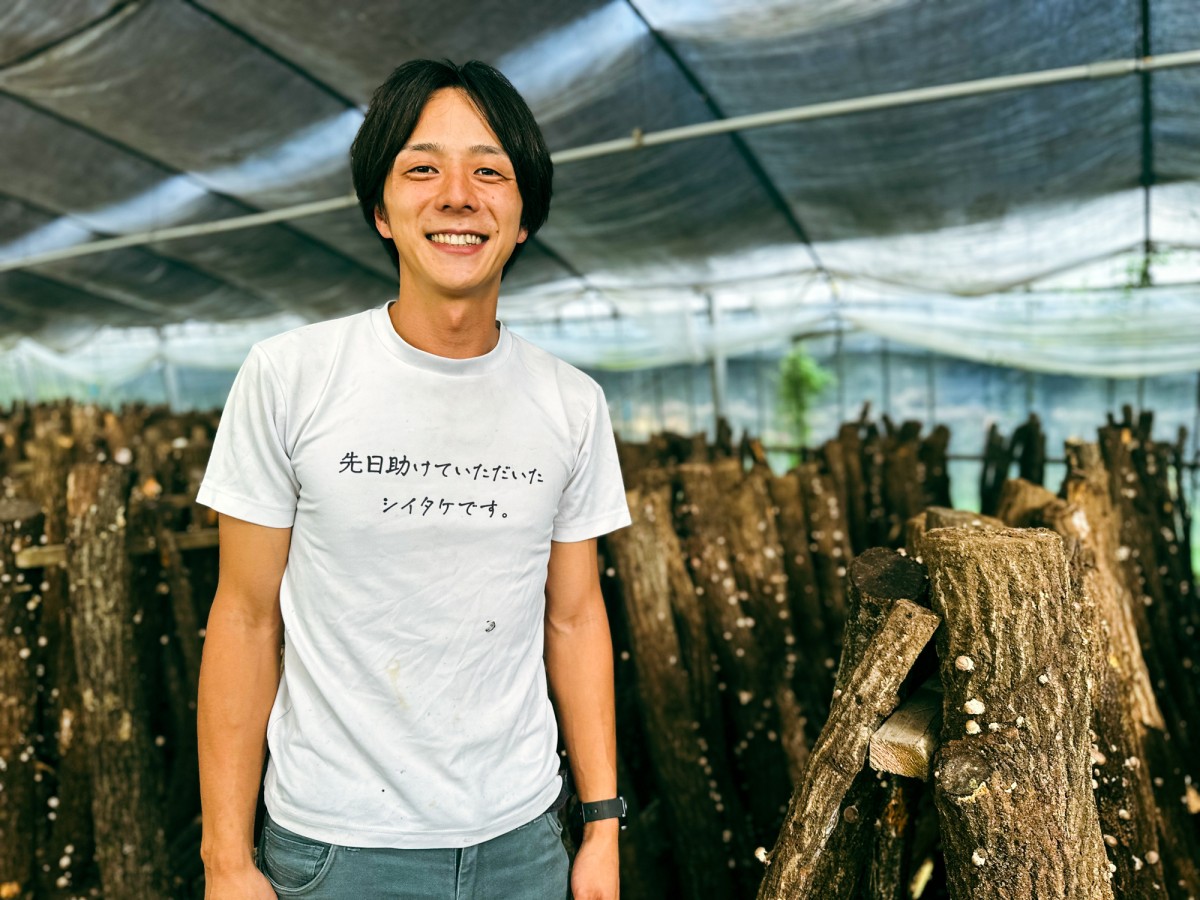 Ryosuke Shimojo, third-generation shiitake mushroom farmer. From his father, he learned to grow shiitakes the traditional way, on sawtooth oak logs. (Photo by Norie Quintos)
Ryosuke Shimojo, third-generation shiitake mushroom farmer. From his father, he learned to grow shiitakes the traditional way, on sawtooth oak logs. (Photo by Norie Quintos)
There’s another reason for gratitude. These forests abound in sawtooth oak but left to grow unabated, they will overcrowd and weaken and cause damage during the many storms that sweep through. But when they are thinned and pruned, strong shoots grow in a cycle of renewal. It’s yet another example of nature and humanity working in harmony. Unfortunately, there are fewer than 10 families left in the area growing shitake mushrooms the traditional way. As we gather ’round the grill taking newfound pleasure in watching fungi sizzle and steam, Shimojo points out a particular muscle on his arm he says only mushroom farmers develop, as his young son proudly reaches to inspect it.
Our farewell breakfast is in the outdoor waiting area of an unmanned train station within the ancient crater. The Choyo station was closed after an earthquake in 2016, though trains recently began coming through again. Misao Hisanaga comes out wearing a stuffed-toy octopus hat and a black tee printed with the words “no chiffon, no life.” He passes out plates of cake topped with whipped cream and berries. He used to work for a big company but decided to make a change, rented the station office, and turned it into a cafe. “I just want to be happy and make people happy.” And so he makes frothy confections and wears zany hats and makes train passengers smile through the windows as they rumble through. 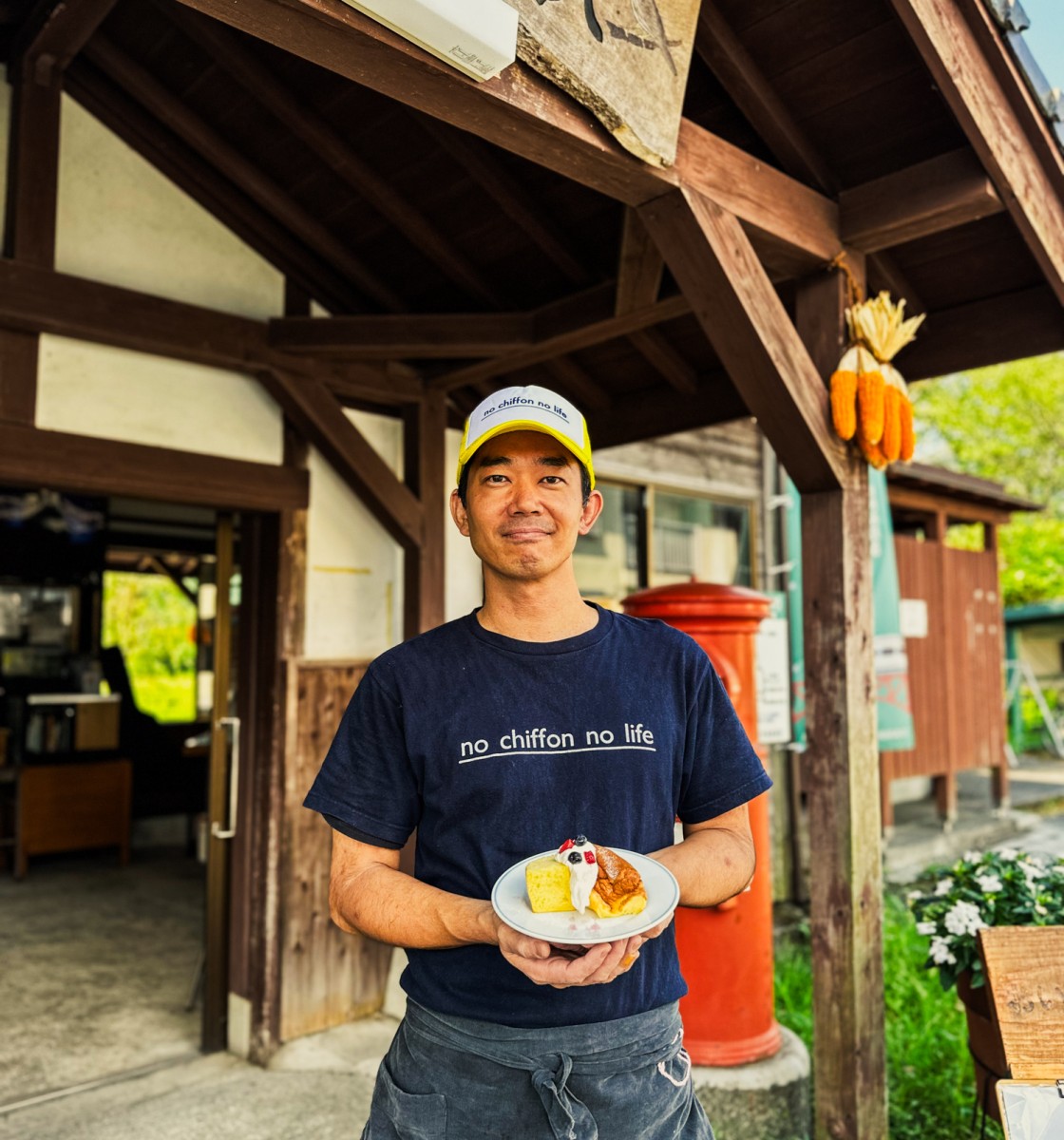 Misao Hisanaga runs a cafe out of a whistle-stop station in Kumamoto Prefecture. (Photo by Norie Quintos)
Misao Hisanaga runs a cafe out of a whistle-stop station in Kumamoto Prefecture. (Photo by Norie Quintos)
Hisanaga brings out the commemorative art poster for the recent re-opening of the Minamiaso Railway and points to our guide as its designer. Though we’ve come to know 34-year-old Max Wall over the last five days, and heard how he had immigrated from Sweden, learned to speak Japanese, and settled on the island to raise a family, we had no idea of his artistry, born out of his interest in Japanese anime and manga. It strikes me that this is the bright future of this island marked by volcanoes: younger generations embracing the ancient cultural beating heart of Japan and evolving it at the same time.
How do people live in the caldera of a volcano that sustains life and creates livelihoods yet has the power to obliterate it all in an instant? From what I saw: with resilience, love, and always, joy.
Norie Quintos writes about sustainable and responsible travel. Check out her website (www.noriequintos.com) and follow her on Instagram @noriecicerone. Contributing writers to this destination series were hosted on adventures throughout Japan as part of the Adventure Travel World Summit 2023 in Hokkaido, Japan.
